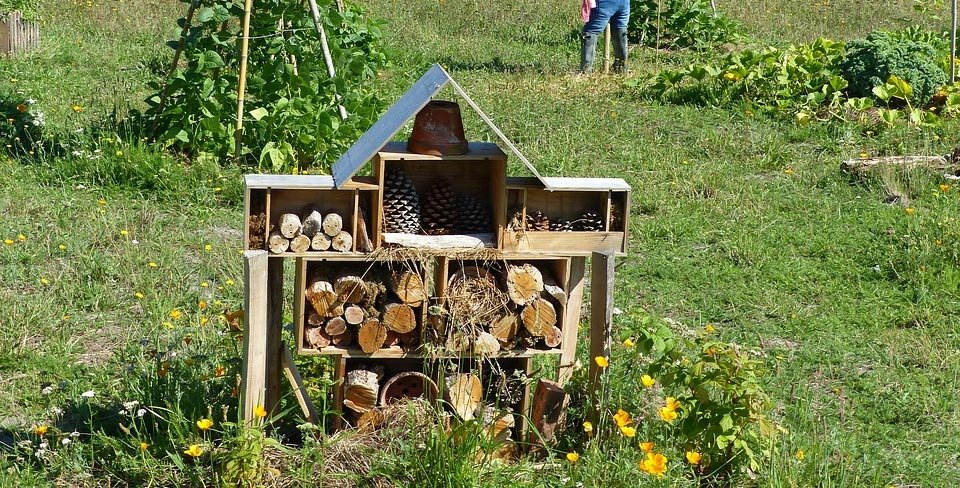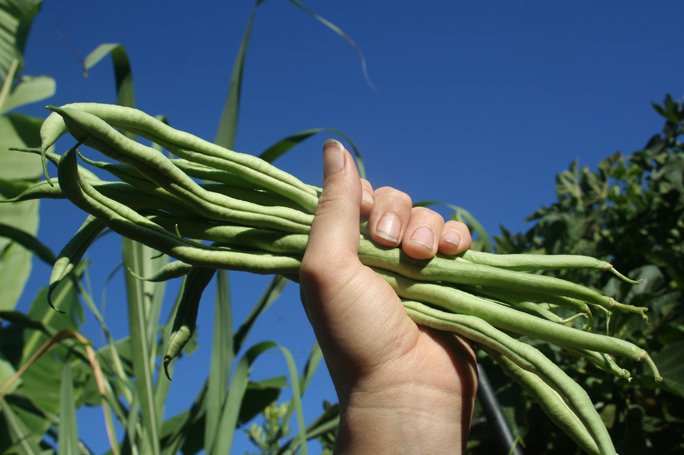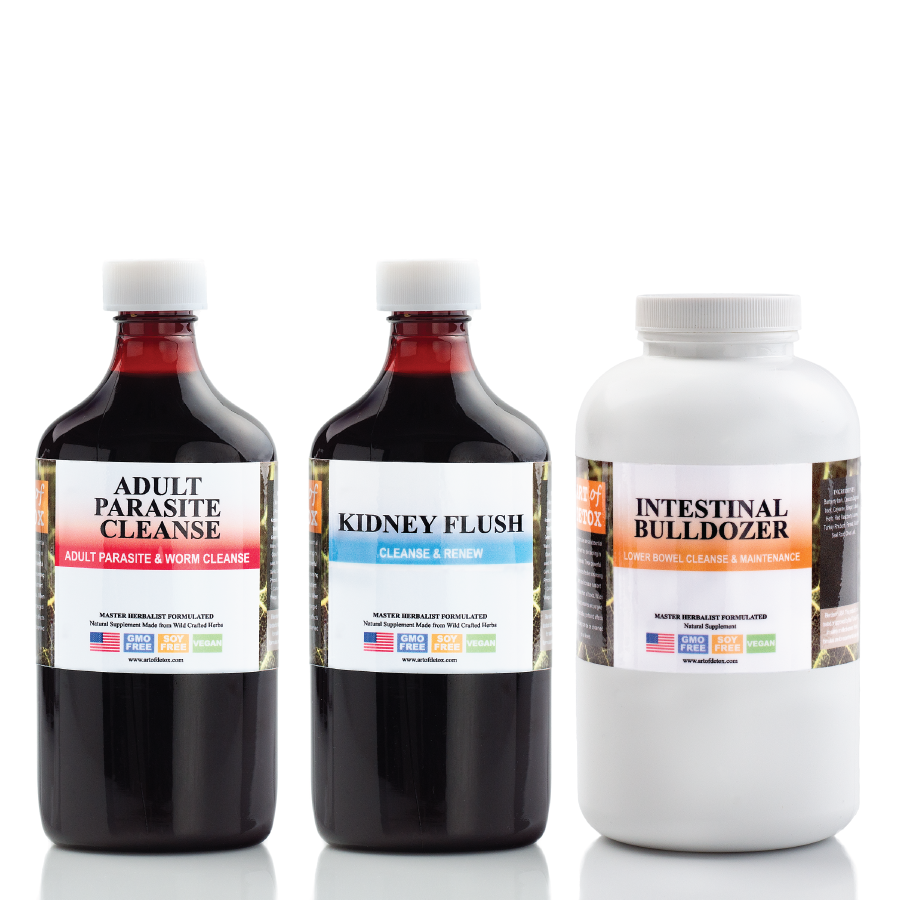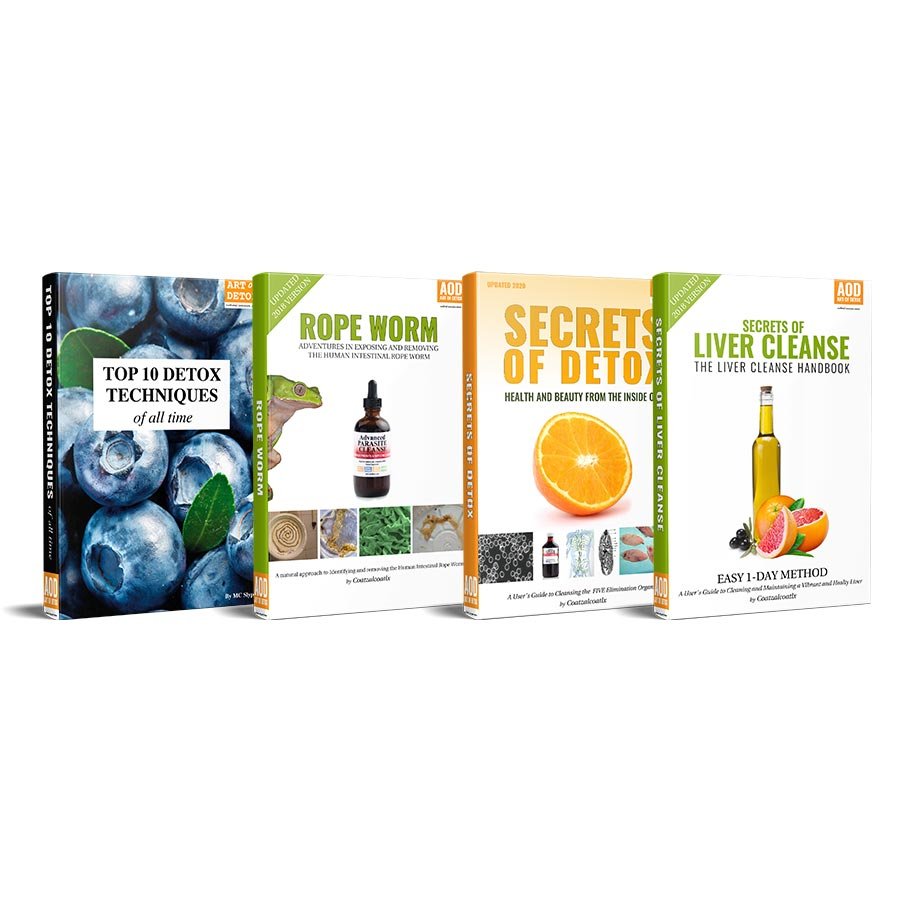Family grows 7000 pounds of organic food per year on a tenth of an acre, supplying 90 percent of their vegetarian diet… They spend less than $2 per day per person on other kitchen staples and make over $20,000 a year selling excess produce.
Fifteen minutes from downtown Los Angeles, just 100 feet away from a major freeway, a small city lot was transformed into a mini paradise.
A fifth acre lot, minus the house, garage and driveway, the family has converted the remaining tenth of an acre into a tiny food forest that produces 7000 pounds of food per year with no synthetic fertilizers.
What’s the secret to their abundance? Permaculture methods that mimic Mother Nature to create nutrient-and-bacteria-rich soil.
Conventional agriculture methods strip nutrients from the soil until the land becomes barren and desertified.
Permaculture not only does not strip the soil, it regenerates it, says permaculture guru Toby Hemenway.
When Jules Dervaes moved to his Pasadena home in the 1985, there was no soil, only adobe-like clay.
He and his family spent years bringing the earth back to life with rock dust, chicken and goat manure, fermented compost and effective microorganisms.
The Dervaes’s haven’t used organic NPK fertilizers since 2007, and have never used synthetic NPK.
They make the most of their small space with a modified version of square foot gardening they call “square inch gardening.”
In square-inch gardening plants are packed as closely together as possible to prevent evaporation from the soil and save water.
The Darvaes believe soil should never be bare and exposed to the elements. They ignore the spacing recommendations on seed packages and sew them as close together as possible in symbiotic arrangements.
“Bigger vegetables like broccoli or peppers are planted with a carpet of greens – lettuce, arugula, etc., underneath … the green carpet acts like a living mulch, preventing weeds and keeping the soil moist,” it says on their website UrbanHomestead.org.
Not only does this make the most efficient use of space, it requires less maintainence. As the Darvaes’ write “no rows, no hoes.” Everything is done by hand, except for one of their favorite tools, a soil-block maker. This allows them to get new seedlings started in blocks of soil, ready to replace annual crops as soon as their season is up.

Path to Freedom founder Jules Dervaes said he knew he wanted to be a back-to-the-lander eversince the Vietnam War. He had no idea his revolution would begin in Pasadena, California. He didn’t intend to live in the fixer upper house he bought there forever but a severe drought in the 1990s triggered him to start the garden that kept him there.
His lawn was costing him too much water, too much money and too much time. He decided to take a stand by mulching his front lawn and planting “something useful.”
Darvaes says he was just “fiddling around” until he learned GMOs had entered the food supply in 2001. After that he “went a little crazy” and decided to find out just how much food his little plot could grow. He wanted acres, but couldn’t wait for that and decided to work with what he had.
“Dad started taking over every square inch, horizontal, vertical, the frontyard, the backyard and the driveway,” his daughters Anais and Jordanna say in the video above.
There were no models to follow, we just did it,” said his son Justin Dervaes.
“I believe growing food is one of the most dangerous occupations on Earth, because you’re in danger of becoming free,” the now deceased Jules says in the video.
The family also makes their own biodiesel and their home is almost entirely solar powered.
Source: Return to Now
Original price was: $37.97.$29.99Current price is: $29.99.
21% Off






